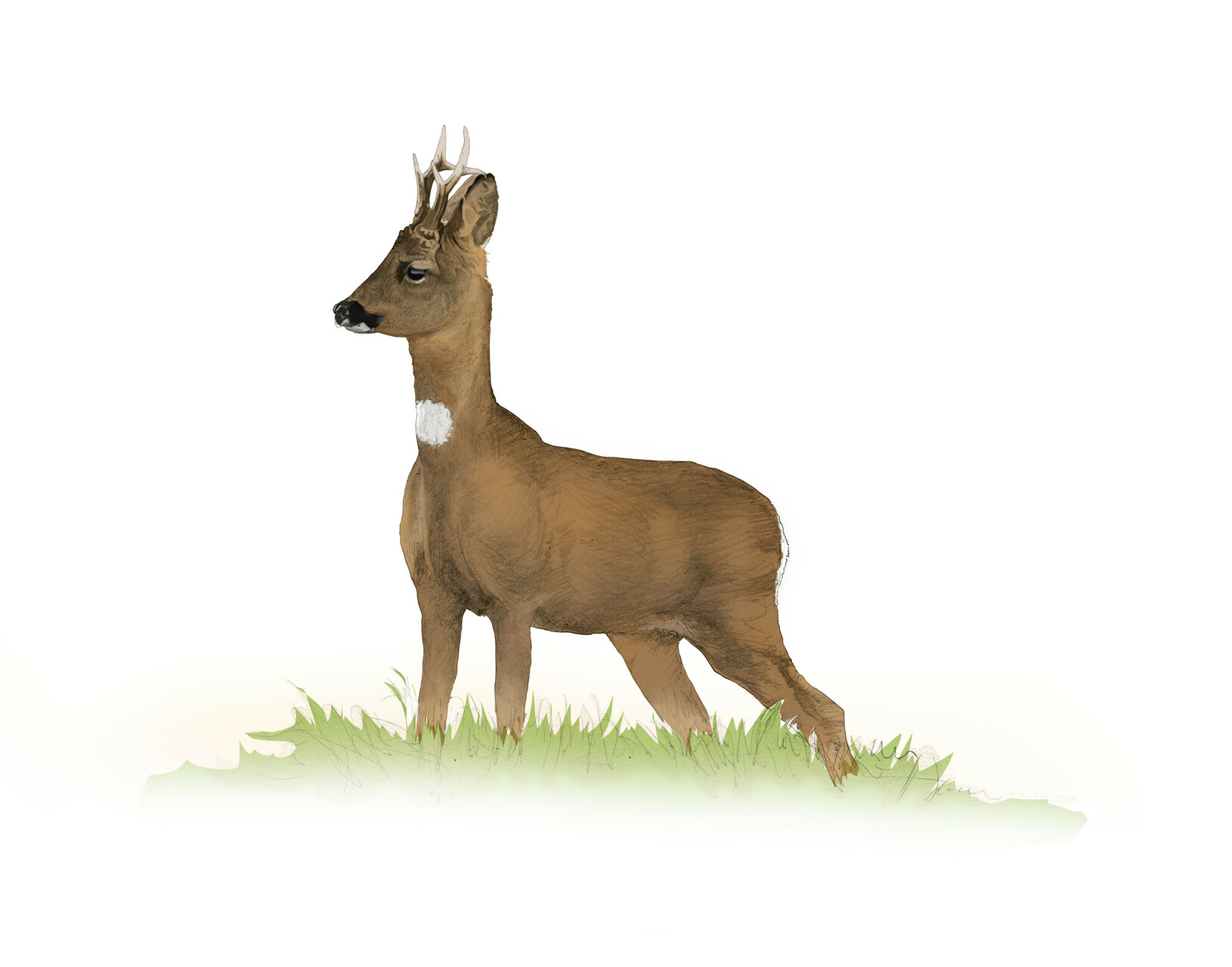
Capreolus capreolus
Woodland and open countryside where there are plenty of hedges and trees.
The roe deer is the smallest native deer in Europe, standing 75cm at the shoulder. In summer they are reddish brown with a white rump or bottom; in winter they grow a thicker coat of greyish brown. They are so well camouflaged amongst trees that when they stand still they are almost invisible. The best time to spot them is early morning, especially in winter when the trees have lost their leaves. Male roe deer have short antlers which are used for fighting other males during the breeding or rutting season. After the rutting season has finished in August, the antlers drop off. You sometimes find these in areas where deer live. New antlers start to grow straight away. While they are growing they are covered in a velvety skin which supplies blood to the growing antler. The antlers are fully grown by March and the velvet starts to come off. Male roe deer often scratch and scrape their antlers on tree bark to help shed the velvet. You can often see evidence of this on tree trunks (and it can damage the trees).
Roe deer are active both day and night, particularly at dawn and dusk. They feed on grasses, ferns, heather, bramble, ivy, forest fruits and the buds and leaves of trees and shrubs. In July and August male roe deer (bucks) become very aggressive towards other males and defend one or more females in their territory. This is called the ‘rut’. The bucks may be noisier at this time, giving out short little barks and chasing the females (does). Females give birth, usually to twins, in May or June. The mother feeds the young deer on milk for several months as they gradually learn to feed themselves. In winter roe deer live in groups, led by an older female.
People have hunted roe deer for centuries and by the 1700s they were extinct in many areas of Britain. Since then they have been re-introduced into some areas and now they are fairly widespread, but are more common in Scotland and northern England. Roe deer are protected by laws which state how and when they can be hunted and when they shouldn’t be disturbed. If you ever find a young deer that looks as though it has been abandoned – leave it alone and creep away quietly. A mother deer normally leaves her babies hidden while she goes off to feed and will return later when nobody is about.